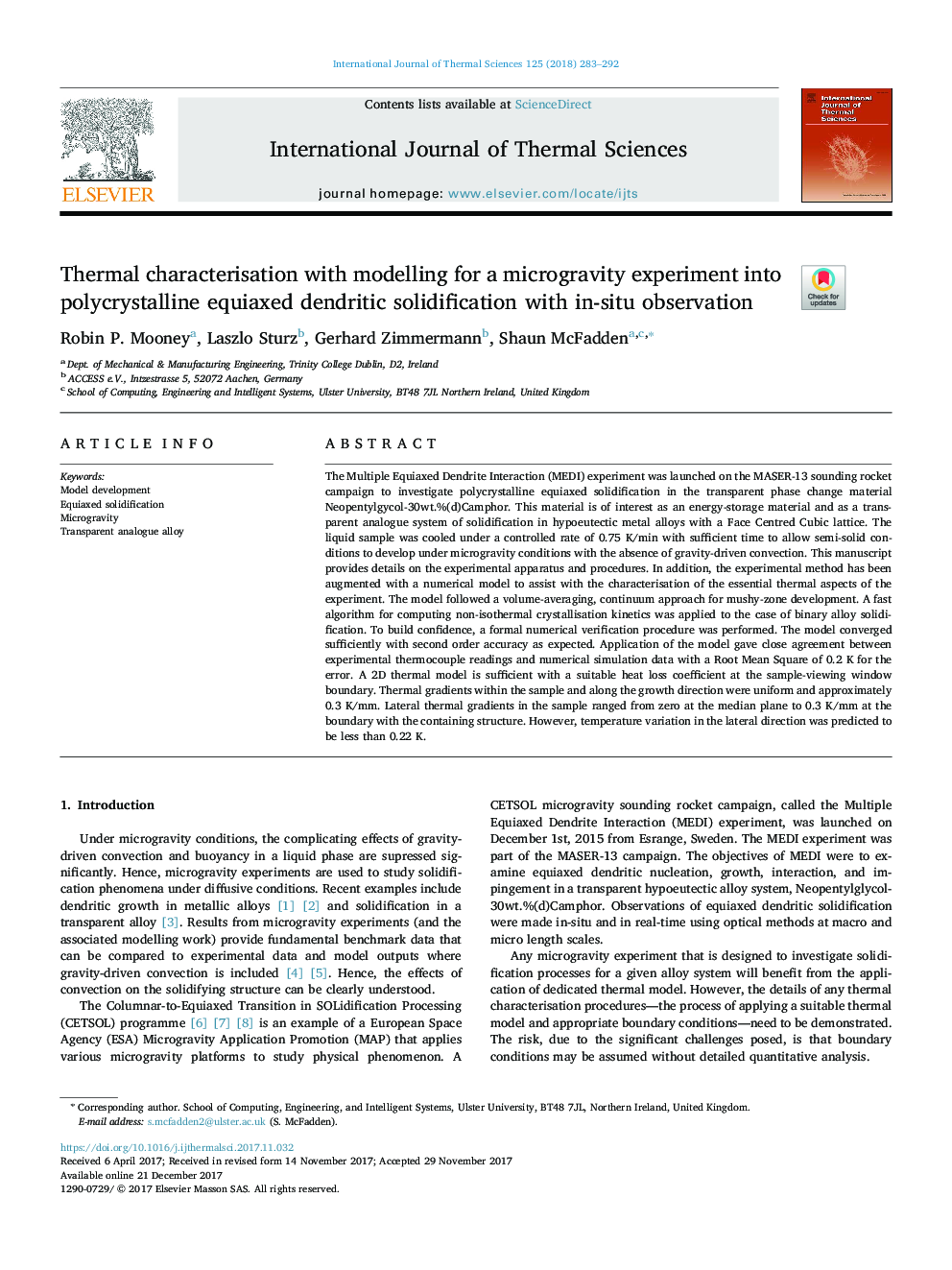| Article ID | Journal | Published Year | Pages | File Type |
|---|---|---|---|---|
| 7060844 | International Journal of Thermal Sciences | 2018 | 10 Pages |
Abstract
The Multiple Equiaxed Dendrite Interaction (MEDI) experiment was launched on the MASER-13 sounding rocket campaign to investigate polycrystalline equiaxed solidification in the transparent phase change material Neopentylgycol-30wt.%(d)Camphor. This material is of interest as an energy-storage material and as a transparent analogue system of solidification in hypoeutectic metal alloys with a Face Centred Cubic lattice. The liquid sample was cooled under a controlled rate of 0.75Â K/min with sufficient time to allow semi-solid conditions to develop under microgravity conditions with the absence of gravity-driven convection. This manuscript provides details on the experimental apparatus and procedures. In addition, the experimental method has been augmented with a numerical model to assist with the characterisation of the essential thermal aspects of the experiment. The model followed a volume-averaging, continuum approach for mushy-zone development. A fast algorithm for computing non-isothermal crystallisation kinetics was applied to the case of binary alloy solidification. To build confidence, a formal numerical verification procedure was performed. The model converged sufficiently with second order accuracy as expected. Application of the model gave close agreement between experimental thermocouple readings and numerical simulation data with a Root Mean Square of 0.2Â K for the error. A 2D thermal model is sufficient with a suitable heat loss coefficient at the sample-viewing window boundary. Thermal gradients within the sample and along the growth direction were uniform and approximately 0.3Â K/mm. Lateral thermal gradients in the sample ranged from zero at the median plane to 0.3Â K/mm at the boundary with the containing structure. However, temperature variation in the lateral direction was predicted to be less than 0.22Â K.
Related Topics
Physical Sciences and Engineering
Chemical Engineering
Fluid Flow and Transfer Processes
Authors
Robin P. Mooney, Laszlo Sturz, Gerhard Zimmermann, Shaun McFadden,
